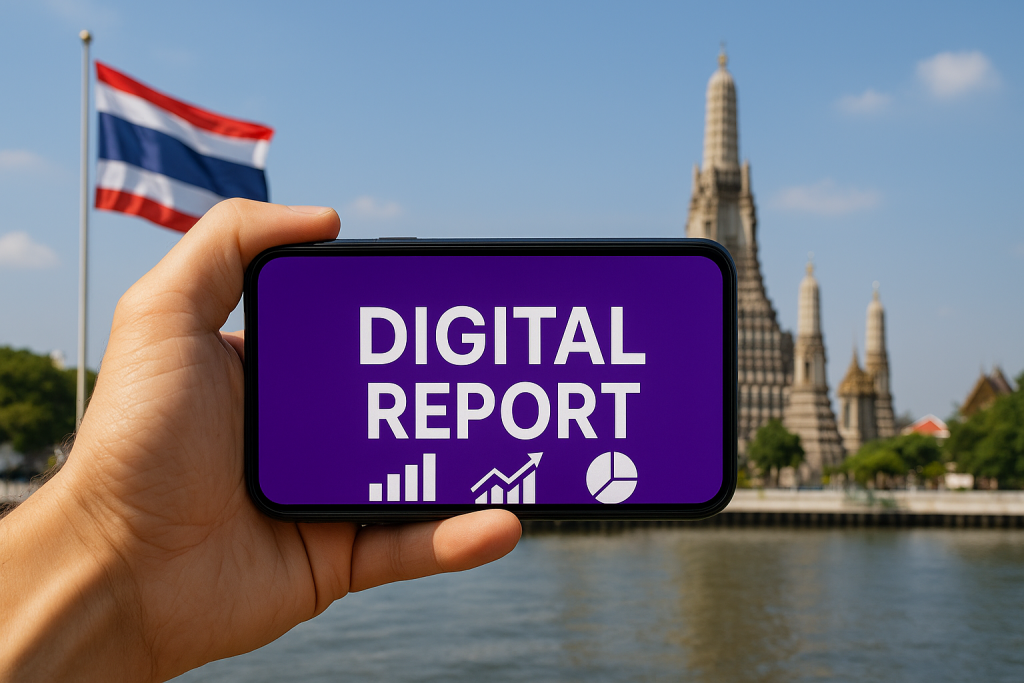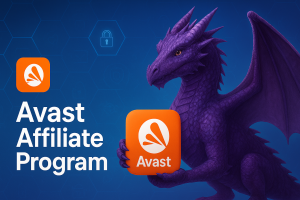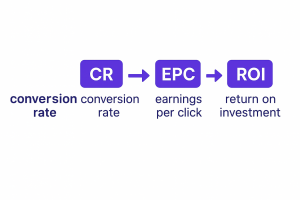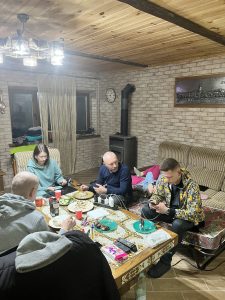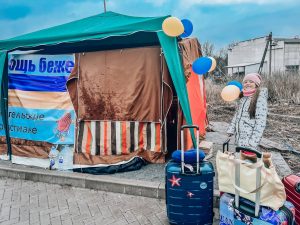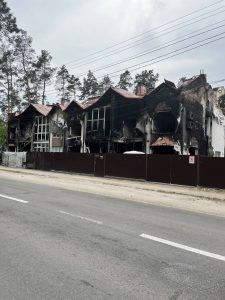Thailand’s digital landscape in 2024 demonstrates a maturing yet dynamic environment, characterized by high internet and mobile penetration, significant advancements in telecommunications infrastructure, and a rapidly expanding digital economy. With 88.0% internet penetration and 136.1% cellular mobile connections, the nation is deeply connected, fostering a mobile-first digital lifestyle. The telecommunications sector is consolidating, with AIS and True Corporation emerging as dominant forces, heavily investing in 5G networks that now cover over 95% of the population. This infrastructure push is driving growth in Mobile Value-Added Services (MVAS), particularly in mobile financial services, where e-wallets like TrueMoney and PromptPay are leading Thailand towards a cashless society. The social media landscape is vibrant, with Facebook, LINE, and TikTok dominating user engagement and increasingly serving as platforms for commerce. Digital advertising continues its robust growth, shifting towards mobile, programmatic, and influencer-led strategies, reflecting a highly engaged online populace and evolving marketing channels. Regulatory frameworks are adapting to support this digital transformation, fostering innovation while addressing new challenges.
1. Thailand’s digital landscape: An overview
1.1 Internet and mobile connectivity
Thailand exhibits a highly connected populace, with digital adoption reaching significant levels at the start of 2024. The nation recorded 63.21 million internet users, translating to an impressive internet penetration rate of 88.0% of the total population. This figure indicates a near-saturation point for basic internet access. The growth in internet users, however, has slowed, with an increase of only 84 thousand individuals, or 0.1%, between January 2023 and January 2024. Despite this high penetration, approximately 8.64 million people, representing 12.0% of the population, remained offline at the beginning of the year.
The mobile sector underscores a pervasive digital engagement. There were 97.81 million active cellular mobile connections in Thailand in early 2024, a figure equivalent to 136.1% of the total population. This substantial penetration rate points to widespread multi-SIM usage among individuals. Complementing this, internet access within households saw a notable increase, surging to 21.7 million in 2024 from 21 million in the preceding year. The Digital Economy and Society (DES) Ministry further reported that 50.1 million individuals aged 16 to 74 were connected, an increase from 49.2 million in the previous year.
A significant trend observed is the deepening engagement of users with online services. Daily internet usage experienced a substantial rise, reaching 9 hours and 20 minutes in 2024, a notable increase from 7 hours and 25 minutes previously.This contrasts with other reports indicating a slight reduction in average daily usage to 7.58 hours , but the DES Ministry’s data highlights a strong upward trajectory in time spent online. A compelling 77% of users reported that they find the internet indispensable in their daily lives. Furthermore, the quality of internet access is improving, with the median mobile internet connection speed recorded at 40.69 Mbps (a 7.5% year-on-year increase) and fixed internet speed at 216.26 Mbps (a 5.1% year-on-year increase) at the start of 2024.
The high internet penetration and mobile connection rates demonstrate that Thailand has largely achieved basic digital access. The slower pace of new user acquisition, coupled with the significant increase in daily internet usage, suggests that future digital economy growth will primarily stem from existing users deepening their interaction with online services. This necessitates a strategic shift from merely providing access to enriching the digital experience and expanding the breadth of available services. The persistent 12% offline population represents a segment that may require targeted digital inclusion initiatives, potentially focusing on specific demographics or rural areas. The pronounced mobile connection rate, significantly higher than internet penetration, reinforces Thailand’s mobile-first orientation. This pervasive reliance on mobile devices, supported by improving internet speeds, underscores the critical need for continuous investment in mobile network infrastructure, particularly 5G, and the development of services optimized for mobile platforms. The extensive daily online engagement places considerable demands on network capacity and quality, making robust infrastructure a prerequisite for sustained digital expansion.
1.2 Population demographics and digital penetration
Thailand’s demographic profile in January 2024 reveals a total population of 71.85 million, experiencing a modest increase of 95 thousand individuals, or 0.1%, from early 2023. The population composition is evenly balanced, with 51.5% female and 48.5% male. Urban centers house 53.9% of the population, while 46.1% reside in rural areas.
A notable demographic characteristic is the median age of 40.5 years. The age distribution indicates a significant proportion of the population in older age brackets: 14.0% are aged 25-34, 14.3% are 35-44, 14.2% are 45-54, 14.3% are 55-64, and 16.3% are aged 65 and above.
The aging demographic, evidenced by a median age of 40.5 years and a substantial segment of the population aged 45 and above, including a notable 16.3% over 65, presents specific considerations for digital strategies. While overall internet penetration is high, digital literacy and adoption can vary significantly across age groups, potentially contributing to the 12% offline population. This suggests that digital inclusion efforts must be tailored to address the needs of older, less digitally native segments, emphasizing user-friendly interfaces, accessible services, and targeted digital literacy programs to ensure equitable growth.
The near-equal distribution between urban and rural populations implies a dual market dynamic. Urban areas are likely to be early adopters and drivers of advanced digital services, while rural areas represent a considerable market with distinct needs and challenges, particularly regarding infrastructure and affordability. The reported increase in internet access for low-income households indicates initial success in bridging this divide. Consequently, digital service providers and advertisers should implement segmented approaches: focusing on high-speed, innovative services for urban consumers, and affordable, essential, mobile-first solutions for rural communities.
Table 1: Thailand Digital Adoption Key Metrics (2024)
| Metric | Value (2024) | Penetration Rate (%) | Year-on-Year Growth | Source Snippets |
| Total Population | 71.85 million | – | +0.1% | |
| Internet Users | 63.21 million | 88.0% | +0.1% | |
| Cellular Mobile Connections | 97.81 million | 136.1% | – | |
| Social Media Users | 49.10 million | 68.3% | +2.1% | |
| Daily Internet Usage (DES Ministry) | 9 hours 20 minutes | – | Up from 7h 25m | |
| Median Mobile Internet Speed | 40.69 Mbps | – | +7.5% | |
| Median Fixed Internet Speed | 216.26 Mbps | – | +5.1% |
Note: Discrepancies in daily internet usage exist between sources. The 9 hours 20 minutes figure is from the Digital Economy and Society (DES) Ministry, while other reports indicate a lower average of 7.58 hours.
2. Mobile telecommunications market
2.1 Major Mobile Network Operators (MNOs) and Market Dynamics
The Thai telecommunications market is characterized by a moderate level of fragmentation, with key players including AIS, DTAC, TrueMove, CAT Telecom, and Thaicom. The market size was estimated at USD 21.49 billion in 2024 and is projected to grow to USD 22.35 billion in 2025, reaching USD 26.98 billion by 2030, at a Compound Annual Growth Rate (CAGR) of 3.83% from 2025-2030. The broader telecom and pay-TV services revenue is also expected to increase at a CAGR of 2.8% from $9.8 billion in 2024 to $11.2 billion in 2029. Within this, the mobile segment revenue is anticipated to experience moderate growth, with a CAGR of 1.4% over 2023-2027, reaching approximately USD 8.2 billion (THB 294.6 billion).
A significant development reshaping the industry is the merger of TrueMove and DTAC, forming True Corporation, which now stands as a major entity with over 55 million subscribers. Despite this consolidation, AIS has maintained its market leadership, holding a 49% revenue market share in the mobile sector by the end of 2024, an increase from 48% in 2023. True is projected to lead the mobile service segment in terms of subscriptions in 2024.
National Telecom (NT), formed from the 2021 merger of state-owned CAT Telecom and TOT Plc, faces significant challenges. Its mobile business reported a THB 4 billion loss in 2023, with a projected THB 900 million loss for fixed broadband in 2024. Consequently, NT is reportedly in discussions with AIS and True Corp for potential partnerships, including infrastructure sharing and customer base expansion. The National Broadcasting and Telecommunications Commission (NBTC) has expressed concerns that NT’s potential exit from core service areas could negatively impact market competition.
The merger of TrueMove and DTAC, coupled with AIS’s sustained market dominance, has effectively created an increasingly consolidated mobile market, trending towards a duopoly. The financial struggles of National Telecom and its discussions with AIS and True suggest a potential shift for NT towards a wholesale or infrastructure-focused role rather than a direct competitor. This market consolidation could lead to a reduction in aggressive price competition, potentially allowing the dominant players to achieve higher Average Revenue Per User (ARPU). The focus for these operators will likely shift towards differentiation through value-added services and superior network quality. Regulatory bodies like the NBTC will face an ongoing imperative to monitor market dynamics to ensure fair competition. For new market entrants or Mobile Virtual Network Operators (MVNOs), opportunities may arise in niche segments or through strategic wholesale agreements with the established operators.
Furthermore, the moderate growth in mobile service revenue, contrasted with the faster growth projected for the overall telecom market, indicates a strategic pivot by MNOs beyond traditional connectivity. AIS’s stated vision to become a “Cognitive Telco” and its substantial investments in cloud services, data centers, and enterprise solutions exemplify this transformation. True Corporation also articulates a vision of becoming a “telecom-tech leader”. This strategic evolution means that telcos are increasingly competing in new digital domains, including cloud computing, IoT solutions, and various digital platforms for businesses. Companies seeking to enter the Thai market should recognize these evolving telcos as critical enablers of digital transformation across diverse sectors, making partnerships with them increasingly valuable.
2.2 Subscriber Base and Market Share Analysis
In 2024, AIS reported serving 45.8 million mobile subscribers, marking an increase of 1.1 million from 2023. At the end of 2023, AIS’s mobile subscriber base comprised approximately 32 million prepaid and 13 million postpaid customers.True Corporation, following its merger, recorded 49.4 million mobile subscribers by the end of 2024. While this represented a 4.7% decrease from the end of 2023, it showed a positive quarter-on-quarter growth of 0.2%. True’s subscriber base included 15.2 million postpaid and 34.2 million prepaid customers. It is important to note that True’s mobile subscriber numbers were negatively affected by law enforcement-led scam prevention efforts, impacting approximately 133,000 subscribers.
AIS successfully maintained its mobile revenue market share at 49% by the end of 2024. While AIS holds revenue leadership, True is expected to lead in terms of total mobile subscriptions in 2024. The overall mobile phone penetration in Thailand is projected to remain high, stabilizing around 166% by 2030, indicating a continued reliance on multi-SIM usage among the population.
Beyond mobile, the fixed broadband sector has become a significant area of growth. AIS 3BB FIBRE3, following its acquisition, reached 5 million subscribers in 2024, a net increase of 243,000 users from the previous year. This achievement has solidified AIS’s market leadership in fixed broadband, securing a 45% revenue share. True’s online (fixed broadband) subscriber base reached 3.7 million at the end of 2024.
The subscriber data indicates a shift in operator strategy within a highly penetrated market. True’s quarter-on-quarter subscriber growth, despite a year-on-year decline partly attributed to scam prevention efforts, coupled with increases in mobile service revenue and ARPU , suggests a deliberate focus on acquiring and retaining higher-value customers. This emphasis on “quality subscriber acquisition” and upselling initiatives, also observed with AIS’s consistent revenue leadership, points to a competitive environment where customer monetization and retention are paramount. Operators are increasingly prioritizing the value of each subscriber over sheer volume, leveraging advanced services like 5G to enhance ARPU.
The significant expansion of AIS’s fixed broadband subscriber base to 5 million, securing market leadership, alongside True’s substantial online subscriber presence, highlights fixed broadband as a new competitive battleground. This indicates that telcos are extending their competition beyond mobile connectivity into comprehensive home connectivity solutions. The focus is on high-speed fiber-to-the-home/business (FTTH/B) services and the bundling of mobile and fixed services. This trend creates opportunities for smart home device manufacturers and content platforms that can leverage robust fixed connections to deliver enhanced digital experiences.
2.3 4G/5G Adoption and Network Infrastructure Development
Thailand has emerged as a prominent leader in 5G adoption within the Asia-Pacific region, often cited alongside Singapore as a “quiet achiever”. As of June 2024, commercial 5G standalone (SA) networks are operational in the country.
Both major operators have made significant strides in 5G rollout. AIS reported 12 million 5G users in 2024, marking a substantial 31% year-on-year increase. Its 5G network coverage now extends to over 95% of the population, with more than 99% coverage in strategic areas like Bangkok and the Eastern Economic Corridor (EEC). True Corporation’s 5G subscriber base reached 13.8 million by the end of 2024. For True, new 5G subscribers have notably contributed to a 10-15% boost in Average Revenue Per User (ARPU) and approximately a 30% increase in data usage during 2024.
The proliferation of 5G-enabled devices is also evident, with the share of 5G smartphones increasing to 45.6% in 2024, up from 43.2% in 2023. This growth is largely attributed to the decreasing starting prices and wider availability of affordable 5G Android models, coupled with a growing consumer appetite for advanced connectivity. While 4G services constituted the majority of mobile subscriptions in 2024, 5G subscriptions are projected to rapidly increase and surpass 4G’s share by 2026. However, 4G is expected to remain a dominant technology across the APAC region until 2030, albeit with a narrowing gap to 5G.
Network quality and performance are critical competitive differentiators. Opensignal reports indicate AIS’s strong performance, leading in Games Experience, Voice App Experience, Upload Speed Experience, Consistent Quality, and Coverage Experience. DTAC maintains its leadership in Reliability Experience, while TrueMove H and DTAC share the top position for Download Speed Experience.
Telcos are actively enhancing connectivity across both urban and rural areas, with a strategic focus on supporting emerging technologies such as the Internet of Things (IoT) and smart cities. AIS has allocated a significant CAPEX budget of Bt 26-27 billion for 2025 to further bolster Thailand’s digital infrastructure, encompassing both mobile and broadband networks. True, similarly, completed the modernization of 13,100 sites in 2024, achieving 77% of its network modernization ambition.
Policy considerations play a vital role in accelerating 5G deployment. Recommendations include reducing spectrum prices and offering incentives, such as rebates for exceeding network rollout obligations. A clear roadmap for future spectrum availability is also deemed essential to meet increasing data demands. The economic benefits of 5G are substantial, with projections indicating an almost US$130 billion contribution to the Asia Pacific economy by 2030. The manufacturing sector is expected to be the primary beneficiary, followed by tourism and services in Thailand. Despite these opportunities, the cost of adoption remains a significant hurdle in the current economic climate.
The rapid growth in 5G subscriber numbers for both AIS and True, coupled with the observed ARPU boost and increased data usage, firmly establishes 5G as a pivotal revenue driver for mobile network operators. Beyond consumer benefits, 5G’s foundational role in enabling IoT, smart cities, and stimulating growth in key industries like manufacturing and tourism positions it as a critical enabler for broader digital transformation. This suggests that telcos are investing in 5G not merely for faster consumer internet but as a strategic platform for developing B2B solutions, industrial IoT applications, and smart infrastructure. Opportunities abound for technology providers to collaborate with these operators to leverage the advanced capabilities of 5G networks.
In a market increasingly dominated by two primary players (AIS and True Corporation), network quality and user experience have become paramount competitive differentiators. The Opensignal awards, highlighting specific strengths of each operator in areas like gaming, voice apps, and speed, demonstrate that while both are robust, they possess distinct advantages. The substantial CAPEX investments by AIS and True’s ongoing network modernization efforts underscore their commitment to continuously improving network performance. This intense competition on network quality will likely lead to ongoing infrastructure upgrades, which benefits consumers through enhanced services but also raises the barrier to entry for potential new competitors.
Furthermore, the emphasis on reducing spectrum prices and providing incentives for network rollout, as advocated by the GSMA, highlights the critical influence of government policy in accelerating 5G deployment. The stated importance of closing the “usage gap” by encouraging migration from older technologies indicates that the mere presence of 5G networks is insufficient; active policy interventions are necessary to ensure widespread adoption and digital inclusion, particularly given the cost barriers in an challenging economic environment. Future regulatory frameworks will likely aim to balance operator revenue generation with broader societal goals of digital inclusion and economic growth. This could involve targeted subsidies for 5G device adoption, educational programs, and policies designed to foster competition in lower-cost segments to facilitate the transition of users from legacy 2G/3G networks.
Table 2: Major Mobile Network Operators: Subscribers and 5G Adoption (2024)
| Operator Name | Total Mobile Subscribers (2024) | 5G Subscribers (2024) | Mobile Revenue Market Share (2024) | Fixed Broadband Subscribers (2024) | Source Snippets |
| AIS | 45.8 million | 12 million | 49% | 5 million | |
| True Corp | 49.4 million | 13.8 million | – (leads in subscriptions) | 3.7 million | |
| National Telecom (NT) | – (losses reported) | – | – | – (losses reported) |
3. Mobile Value-Added Services (MVAS) Ecosystem
3.1 Mobile Financial Services and E-Wallets: Adoption and Regulatory Environment
Thailand is rapidly advancing towards a cashless society, with mobile financial services and e-wallets playing a pivotal role. Internet and mobile banking are the most widely used e-payment channels, recording approximately 144.3 million accounts and over 6.28 billion transfers and payment transactions by October 2024. Mobile wallet adoption is projected to reach 63% in 2025 , with the prepaid card and e-wallet market expected to grow by 15.8% in 2025 alone, reaching USD $18.64 billion, and further expanding to USD $30.87 billion by 2029.
Digital wallets currently account for 23% of online transactions, with over 80% of all online transactions occurring via mobile devices. PromptPay, a key government initiative, has been instrumental in this shift, boasting 77.2 million registrations and 9 million acceptance points. It has become the primary payment method in e-commerce, responsible for 44% of all transactions. Among individual e-wallet platforms, TrueMoney holds a dominant 53% market share, serving over 17 million active users and accepted at 7-Eleven, Family Mart, and over 7 million locations globally. Rabbit LINE Pay follows with an estimated 25% market share, integrated within the popular LINE messaging application. The e-wallet ecosystem is evolving beyond simple payment tools into comprehensive “super apps,” with platforms like TrueMoney, Rabbit LINE Pay, GrabPay, and K Plus offering a diverse range of financial and lifestyle services. It is common for most Thais to utilize multiple e-wallets.
Regulatory support is a cornerstone of this digital finance transformation. The Payment Systems Act B.E. 2560 (2017) provides the framework for supervising e-money, e-wallet, and e-payment services. The Digital Assets Decree regulates cryptocurrencies and digital tokens, aiming to align market standards with international norms and protect investors. In 2024, the Ministry of Finance (MOF) issued criteria for “virtual banks,” complemented by regulatory guidelines from the Bank of Thailand (BOT), with approvals anticipated by mid-2025. Notably, AIS has already formed a consortium with Krungthai Bank (KTB) and PTT Oil and Retail Business (OR) to pursue a virtual bank license. The Securities and Exchange Commission (SEC) has also provided exemptions for programmable payment tests under the BOT’s regulatory sandbox , and new cryptocurrency regulations are facilitating the integration of digital assets into traditional financial systems. The BOT’s interest rate cuts have further stimulated consumer spending, benefiting digital and mobile payments.Technological innovations, including the integration of AI and big data analytics, are enhancing fraud detection and personalizing customer experiences within payment systems.
The hyper-growth projected for e-wallets and digital payments is not merely an organic market expansion but is significantly propelled by explicit government policies aimed at reducing cash circulation and promoting interoperable QR code-based payments. The success of national initiatives like PromptPay has provided a robust foundation for this shift. The evolution of e-wallets into “super apps” by major players illustrates a strategic move to capture a broader share of consumers’ digital lives, extending beyond basic payment functionalities. This environment positions Thailand as a fertile ground for fintech innovation. Businesses should prioritize the integration of diverse digital payment options, particularly PromptPay and the leading e-wallets, into their commerce strategies. The progressive regulatory stance towards virtual banks and digital assets signals a supportive environment for financial innovation, creating avenues for new fintech entrants or strategic collaborations with existing telcos and banks.
The active participation of mobile network operators, exemplified by AIS’s pursuit of a virtual bank license and TrueMoney’s dominant e-wallet market share, underscores their central role in Thailand’s financial inclusion agenda. Telcos are leveraging their extensive subscriber bases and established digital infrastructure to become key providers of financial services, reaching segments traditionally underserved by conventional banking. This convergence transforms telcos from mere connectivity providers into comprehensive digital lifestyle and financial service enablers. This strategic expansion provides them with a competitive advantage in the fintech space, though it also brings increased scrutiny from financial regulators. For businesses, partnering with these telco-led financial platforms can offer direct access to a vast and digitally engaged user base.
3.2 Entertainment, Gaming, and App Purchases
The increasing mobile subscriptions in Thailand are directly fueling a significant rise in demand for Over-The-Top (OTT) services. Mobile Network Operators (MNOs) are actively positioning themselves as comprehensive digital experience enablers, extending beyond basic connectivity.
AIS, for instance, is leveraging its advanced network to explore new frontiers in entertainment and gaming. Its strategic plans include utilizing the metaverse to unlock future possibilities in augmented reality, immersive experiences, gaming, and entertainment. AIS’s V-Avenue.Co, described as the world’s first virtual store, exemplifies this innovative approach, allowing shopping malls and SMEs to showcase products through VR on AIS’s 5G network. Further solidifying its presence in digital entertainment, AIS has partnered with Bro.game, the NVIDIA GeForce NOW service provider in Thailand. This collaboration enables customers to access AAA-level PC gaming via AIS PLAYBOX Android TV and 3BB GIGATV box, transforming these platforms into “All-in-One Entertainment Platforms” that seamlessly integrate video streaming and PC gaming.
True Corporation also offers a range of “Entertainment Packages” and “Game Top-Up” services. Its OTT platform, TrueVisions NOW, has secured exclusive rights to stream major sporting events like the 33rd SEA Games and 13th ASEAN Para Games, further enhancing its entertainment offerings.
The gaming market in Thailand is experiencing robust growth. The computer gaming market is projected to reach 36.1 billion baht in 2025, a 1.6% increase from 2024. In 2024, Thailand recorded over 42 million gaming accounts, indicating a strong growth trajectory with an average increase of 10% per year since 2023. Mobile phone games constitute a significant portion of this market, accounting for 58.3% of the total market value and projected to grow at 1.8%. The overall gaming industry revenue is forecast to reach $2,372 million (USD) in 2025, with an annual growth rate (CAGR 2025-2029) of 7.09%, potentially reaching $3,120 million (USD) by 2029. The number of players is expected to reach 10.8 million by 2029. The success of the gaming industry is also bolstered by the popularity of online streaming platforms such as YouTube Gaming and Facebook Gaming, which host popular local streamers. Despite this growth, the slowing economy has had some impact on consumer spending for game purchases and in-game items.
Mobile network operators are actively integrating entertainment and gaming into their core service portfolios, moving beyond basic data provision. AIS’s partnership with GeForce NOW and its vision for an “All-in-One Entertainment Platform,” alongside True’s entertainment packages and exclusive sports streaming rights, demonstrate a clear strategic intent to become central hubs for digital content consumption. This strategic convergence is a direct response to the escalating demand for OTT services driven by increased mobile subscriptions. This approach creates new revenue streams for telcos through content subscriptions, in-app purchases, and gaming services. It also intensifies competition for traditional media and gaming platforms. Content creators, game developers, and streaming services should explore collaborations with Thai telcos to leverage their extensive customer bases and robust network infrastructure for broader distribution and monetization.
The dominance of mobile games, comprising a significant majority of the Thai gaming market value, underscores a strong mobile-first gaming culture. The consistent growth in gaming accounts and overall gaming revenue projections points to a vibrant and expanding market. The emergence of large-scale tournaments further indicates a burgeoning esports scene, which enhances engagement and offers additional monetization avenues. For mobile game developers and publishers, prioritizing the Thai market with localized content and tailored monetization strategies is crucial. The rise of gaming streaming platforms also highlights opportunities for influencer marketing and community building within the gaming sector. Telcos can further capitalize on this by offering optimized network performance, such as low ping, and introducing specific gaming-centric packages.
3.3 Health, Lifestyle, and Educational MVAS
Thai mobile network operators are expanding their Mobile Value-Added Services (MVAS) to encompass a broader spectrum of health, lifestyle, and educational offerings, aiming to integrate deeper into consumers’ daily lives.
AIS’s strategic vision includes enabling a digital lifestyle for consumers and providing comprehensive enterprise (2B) solutions and digital platforms. A key component of this is their “Smart Health solutions,” designed to facilitate remote healthcare services. This initiative aligns with the broader trend of leveraging digital infrastructure for public welfare.
True Corporation also offers “Lifestyle” and “Smart Living” products and services, reflecting a commitment to enhancing daily convenience through connectivity. Demonstrating a dedication to digital inclusion and societal improvement, True has invested in large-scale initiatives such as its online education platform, Plookpanya, aimed at bridging digital gaps and improving lives through accessible learning.
DTAC provides “dtac Mobile Care,” a service focused on mobile phone protection, offering comprehensive plans for screen, body, and battery care, along with repair services using genuine parts, often including a spare phone during repairs. Furthermore, DTAC’s “Jaidee Services” extend to practical lifestyle support, notably including a “pharmacy voucher” , indicating direct engagement in health-related MVAS.
National Telecom (NT) is also venturing into smart living solutions through a strategic partnership with T3 Technology. This collaboration aims to introduce smart cameras and integrated IoT service offerings for the household market, aligning with NT’s broader strategy of expanding its digital service capabilities to meet evolving consumer demands for advanced technologies.
Underpinning these diverse MVAS offerings is the increasing integration of cloud services, Artificial Intelligence (AI), and big data analytics into mobile services. These technologies are crucial for enhancing operational efficiencies and personalizing customer experiences, with telcos actively leveraging AI-driven analytics for service personalization and network optimization. Emerging technologies like augmented reality, virtual reality, and blockchain are also being explored to transform mobile services, offering new consumer experiences and improving operational efficiencies.
The expansion of telco offerings into areas such as smart health, smart living, and mobile device care signifies a strategic move to embed themselves more deeply into consumers’ daily routines. AIS’s “Smart Health solutions,” NT’s focus on smart home IoT devices, and DTAC’s “pharmacy voucher” are all indicators of this shift. This trend points to a growing market for digital health, smart home, and lifestyle services in Thailand. Telcos are positioning themselves as central platforms for these services, leveraging their robust network infrastructure and extensive customer data. This creates significant opportunities for developers of IoT devices, health-tech solutions, and smart home platforms to collaborate with these operators for broad distribution and seamless integration.
True’s online education platform, Plookpanya, demonstrates a commitment to addressing digital divides through educational initiatives. This aligns with the broader societal need for enhanced digital literacy, particularly relevant given Thailand’s aging population. Educational technology (EdTech) companies could find strong strategic partners in Thai telcos, who possess the necessary reach and infrastructure to deliver online learning solutions at scale. This also highlights a potential area for government-telco collaboration to foster digital skills and lifelong learning across the population.
3.4 Carrier Billing and Content Partnerships
Carrier billing and content partnerships are integral to the monetization strategies of Thai mobile network operators, facilitating seamless transactions for digital goods and services.
AIS has established various payment channels for its services, including the myAIS App, which allows users to pay bills via credit card, debit card, or their Rabbit LINE Pay account. Other payment channels supporting eReceipts include mPAY, AIS Payment Kiosk, Bank Applications, ATMs, and automatic payments via credit card/bank account. This integration of diverse payment methods, including popular e-wallets like Rabbit LINE Pay, streamlines the payment process for consumers. AIS also offers “Entertainment Add-ons” as part of its postpaid packages , indicating direct content monetization through carrier-integrated services. Furthermore, AIS’s partnership with Bro.game to offer NVIDIA GeForce NOW on AIS PLAYBOX and 3BB GIGATV represents a significant content partnership leveraging their broadband infrastructure for gaming. AIS also emphasizes local tailoring of services, including billing in Thai Baht to mitigate foreign exchange risks.
True Corporation offers “Game Top-Up” services, directly facilitating in-game purchases and digital content acquisition through its platform. The “True | dtac Pay” service further suggests a unified payment mechanism following their merger.TrueVisions NOW, as an OTT platform, provides exclusive streaming content, indicating content partnerships that drive subscriptions and engagement. True’s extensive network coverage across all 5G and 4G bands, covering over 99% of the population , provides a robust foundation for delivering content and facilitating carrier billing.
The integration of carrier billing and various digital payment methods by MNOs is a direct response to the increasing demand for digital content and services. By offering seamless payment options, telcos enhance user convenience, which in turn boosts the likelihood of purchases for digital goods, subscriptions, and in-app content. The partnerships with gaming platforms like NVIDIA GeForce NOW and content providers for streaming services demonstrate a strategic move to become comprehensive digital content distributors. This approach not only generates new revenue streams for operators but also strengthens user engagement and loyalty by providing a unified and convenient digital ecosystem. The ability to offer local billing and support further enhances the user experience and reduces friction in digital transactions.
4. Social Media Landscape
4.1 User Numbers, Growth, and Popular Platforms
Thailand’s social media landscape is dynamic and highly engaged. In January 2024, there were 49.10 million active social media user identities in Thailand, which equates to 68.3% of the total population. This figure represents a growth of 1.0 million users, or 2.1%, between early 2023 and the beginning of 2024. For the adult population (18 and above), social media usage was even higher, with 49.00 million users, equivalent to 83.7% of this demographic. Overall, 77.7% of Thailand’s internet user base utilized at least one social media platform in January 2024.
In terms of platform popularity by user base and ad reach in early 2024:
- Facebook: Remains highly popular, with its ad reach equivalent to 68.3% of the total population and 77.7% of the internet user base. Over 90% of internet users reportedly use Facebook. It is also the most favored social media platform by preference at 33.4%.
- LINE: Functions as Thailand’s dominant messaging platform, with 56 million monthly active users as of 2025, representing 85.4% of Thailand’s internet users. It is also used by 90.5% of Thai internet users.
- TikTok: Has rapidly emerged as a major force, with 44.38 million users aged 18 and above in early 2024. Its ad reach increased by 4.1 million users (10.2%) between early 2023 and early 2024. TikTok is used by 83% of internet users and is the second most favored platform by preference at 28.5%.
- YouTube: Recorded 44.20 million users in early 2024, with its ad reach covering 61.5% of the Thai population and 69.9% of internet users.
- Instagram: Showed significant growth, with its potential ad reach increasing by 1.4 million users (8.1%) between January 2023 and January 2024, reaching 18.75 million users. It is used by 64.5% of internet users.
- Facebook Messenger: Reached 35.55 million users in early 2024.
While user numbers and ad reach provide one perspective, market share of visits (as reported by StatCounter for June 2025) presents a different view, with Twitter holding 52.42% and Facebook 29.79%. This distinction is important, as high visit share does not always equate to the largest user base or primary platform for all activities.
The consistent high penetration and steady growth in social media users underscore its deep integration into daily Thai life. The distinction between platforms with the largest user bases (Facebook, LINE) and those driving significant engagement or visit share (TikTok, X/Twitter) highlights a nuanced digital ecosystem. Facebook and LINE remain foundational for broad communication and community building, while TikTok’s rapid growth and strong preference indicate its increasing influence, particularly for content consumption and commerce. This dynamic environment necessitates a multi-platform strategy for businesses and content creators to effectively reach and engage diverse segments of the Thai population.
4.2 Demographics and Usage Patterns
The demographics of social media users in Thailand reflect the broader population, with a slight female majority: 50.8% of social media users were female, while 49.2% were male in January 2024. This gender distribution is consistent across platforms like Facebook. Instagram, however, shows a stronger female skew, with 35.7% of its ad audience being female compared to 25.4% male. TikTok’s ad audience in early 2024 was 48.9% female and 51.1% male.
In terms of age, the largest social media user group is typically aged 25-34 years , with Gen Y (25-34) identified as the group that uses social media the most, possessing a strong understanding of its usage due to early internet access.
Thai people spend an average of 2.31 hours per day on social media platforms and typically use approximately 6.7 platforms per month. The primary reasons for social media engagement among Thais are:
- To communicate with people around them.
- To catch up with news and trends.
- To get rid of boredom in their free time.
Usage patterns vary across platforms and times of day. Social media and other apps are used more in the morning, while streaming video content and TV peak in the evening. Overall media consumption, which surged during the Covid-19 pandemic, has seen a slow decline as Thais revert to post-pandemic lifestyles. Despite this, social media remains a dominant media channel, with 70% usage among Thais.
The demographic breakdown and usage patterns reveal that social media is deeply embedded in the daily lives of Thais, serving as a primary conduit for communication, information, and leisure. The high number of platforms used per month indicates a sophisticated and diversified engagement, where users navigate different platforms for specific needs. The prominence of Gen Y as the heaviest users suggests that content and services targeting this demographic are likely to achieve high engagement. The primary motivations for social media use underscore its role as a fundamental tool for maintaining social connections, staying informed, and seeking entertainment. This multi-faceted utility necessitates a comprehensive digital strategy that considers the varied ways in which different user segments interact with social platforms throughout their day.
4.3 Prevalent Content Trends and Social Media’s Role in Communication, Entertainment, and Commerce
Social media in Thailand serves as a vibrant forum for discussions and content consumption across a wide array of topics. From 2022 to the first half of 2024, the most discussed subjects revolved around the media and entertainment industry, social issues (particularly crimes and accidents), and politics. In the first half of 2024, “Crime & Accidents” accounted for 30% of total social media engagements (views, likes, shares, comments), closely followed by “Politics” and “Media & Entertainment,” both at 21%. Notably, “Media and Entertainment” saw a resurgence of interest in early 2024, with related content accounting for around two-thirds of all engagements in the year. User-generated content (UGC) plays a significant role, constituting 50% of all engagements on social media.
Communication: LINE continues to be the dominant communication hub, deeply embedded in daily life. It functions as a chat platform, newsfeed, e-commerce channel, and CRM tool. Facebook Messenger also maintains a strong user base for communication. The primary reason Thais use social media is to communicate with those around them.
Entertainment: Video content dominates the digital marketing landscape, with platforms like YouTube and TikTok immensely popular. YouTube remains a major platform for content consumption, with 47.6 million users in early 2025 and 44.2 million users in early 2024. TikTok has emerged as the second most popular social media after YouTube for content platforms. The gaming industry’s success is also partly attributed to online streaming platforms like YouTube Gaming and Facebook Gaming. Music streaming is also popular, with YouTube Music leading.
Commerce: Online shopping is increasingly popular, with most respondents in a DES Ministry survey stating they shop online at least once a week. The amount spent online has risen to 428 baht per transaction. Shopee and Lazada are the most popular shopping platforms (95.98%), followed by social media platforms like TikTok, LINE, and Facebook (47.18%).
Thailand is experiencing a social commerce revolution, expected to reach US$5.20 billion in 2025, representing an 18.6% annual growth. TikTok leads as the most popular social commerce platform, surpassing others in driving e-commerce engagement. 69% of Thai consumers regularly shop on social media, with 72% of women and 61% of men making purchases more than six times annually. Platforms like LINE and Facebook enable users to browse, shop, and buy without leaving the app. Live streaming shopping is gaining traction, particularly on TikTok and Facebook, driving higher engagement and conversion rates. E-commerce remains a driving force in Thailand’s digital economy, with its growth reflecting evolving consumer behavior towards digital transactions.
The dominance of media and entertainment, social issues, and politics in social media discussions highlights the platforms’ role as significant public forums. The substantial contribution of user-generated content indicates a highly participatory online culture, where everyday users shape discourse more than official entities. This means brands and political actors need to engage authentically and foster community-driven content rather than solely relying on top-down messaging.
The integration of communication, entertainment, and commerce within social media platforms is a defining characteristic of the Thai digital landscape. LINE’s multi-functional role, TikTok’s leadership in social commerce, and the widespread adoption of online shopping through social channels demonstrate a seamless blend of social interaction with transactional capabilities. This convergence provides significant opportunities for businesses to engage consumers directly within their preferred social environments, leveraging features like live streaming shopping and integrated payment solutions. Success in this environment requires a multi-platform approach, where brands utilize each platform’s unique strengths for different aspects of the customer journey, from awareness and engagement to direct sales.
5. Digital Advertising Landscape
5.1 Total Spending and Growth Trajectory
Thailand’s digital advertising market continues its robust growth trajectory. Digital ad spending in 2024 expanded by 8% to THB 34.5 billion. This growth, while lower than the double-digit rates of previous years, indicates a steady expansion.For 2025, online advertising spending is forecast to grow by 10% to THB 35 billion (over $1 billion), driven by a gradual rebound of the local economy and intense competition within the digital industry. Some projections for Q4 2024 indicated a potential market size of 33.8 billion baht, marking a 16% increase over the previous year , though the full-year figures from DAAT (Digital Advertising Association of Thailand) point to the 8% growth. The overall Thai media ad spend also saw a 4% increase from 2023 to 2024.
The primary factor propelling continuous digital ad spending over the past 12 years is the high level of digital media reach and the extensive time Thais spend online. However, marketers face challenges, including a slow economic recovery, budget constraints from brands due to cautious consumer spending in the second half of 2024, and the risk of consumers being overwhelmed by the influx of online advertisements. Political instability, regulatory changes, and global economic conditions also contribute to market uncertainty.
The consistent growth in digital advertising spending, even if at a slightly moderated pace, underscores the increasing importance of digital channels for reaching Thai consumers. The continued expansion is fundamentally linked to the high digital media reach and the significant time spent online by the population. This implies that digital advertising is no longer just an add-on but a core component of marketing strategies in Thailand. The challenges, such as economic caution and potential ad fatigue, necessitate that marketers adopt more sophisticated and targeted strategies to ensure effectiveness and avoid wasted spend. This environment favors agile and adaptive approaches that can respond to fast-changing consumer behaviors and economic conditions.
5.2 Dominant Digital Advertising Channels and Trends
Digital advertising in Thailand is dominated by several key channels, with a notable shift towards mobile and programmatic advertising.
Social Media Advertising: Social platforms are indispensable for marketing in Thailand. Facebook, Instagram, and TikTok remain integral to digital advertising strategies, enabling targeted promotions based on user data and enhancing engagement across diverse consumer segments. Facebook continues to dominate due to its broad user base and sophisticated ad targeting. TikTok is rapidly gaining ground, projected to become the No. 2 ad platform in 2025 with a value of 5.5 billion baht, surpassing YouTube. TikTok’s viral nature and appeal to younger demographics make it ideal for short-form content and community engagement. LINE Ads leverage LINE’s extensive user base and integrated services, offering precise targeting within its ecosystem. Meta (Facebook and Instagram) remains the primary platform chosen by marketers, though its market share for digital ads is projected to decrease from 28% in 2024 to 26% in 2025.
Search Engine Marketing (SEM): Google Ads continues to play a crucial role in capturing intent-based traffic, providing robust analytics and optimization tools for high ROI.
Display Advertising: While not explicitly detailed as a separate category, display advertising is implicitly present across social media platforms and other online channels. The shift towards mobile is significant, as smartphones are the primary internet access device for over 70% of the population, leading advertisers to increasingly focus on mobile-first formats for personalized campaigns.
Programmatic Advertising: Programmatic and AI-driven advertising solutions are transforming ad buying and targeting in Thailand. These technologies offer deeper insights into consumer behavior, enabling real-time ad placement adjustments and budget optimizations, thereby improving return on investment. Programmatic Out-of-Home (OOH) advertising, though a specific segment, is projected to grow at a 12% CAGR through 2030, propelled by 139,000 additional venues in 2024. This indicates a broader trend of automation and data-driven approaches in advertising. The integration of AI and advanced data analytics is transforming digital marketing by enabling highly personalized experiences, enhancing customer engagement, and improving conversion rates.
Video Content Marketing: Video content remains pivotal, aligning with global trends favoring dynamic and interactive content. Platforms like YouTube, TikTok, and Instagram Reels are immensely popular, driving consumer engagement and prompting brands to create compelling video narratives.
The dominance of social media platforms, coupled with the increasing shift towards mobile and programmatic advertising, reflects the highly connected and mobile-centric nature of Thai consumers. The rise of TikTok as a major ad platform, surpassing YouTube, indicates a significant change in content consumption habits, particularly among younger demographics, favoring short-form, interactive video. The growing investment in programmatic and AI-driven solutions points to a maturation of the digital advertising market, where efficiency, precision targeting, and real-time optimization are becoming critical for maximizing ROI. This environment requires advertisers to adopt integrated, multi-channel strategies, leveraging the unique strengths of each platform while maintaining a mobile-first and data-driven approach.
5.3 Digital Advertising Performance Measurement and Influencer Marketing
Performance Measurement: The digital advertising landscape in Thailand is increasingly focusing on performance measurement, although challenges persist. Nielsen data indicates that while digital channels are expected to account for almost two-thirds of paid marketing spend in APAC, a significant portion may be “wasted,” with the average “off target” rate for digital ads in Thailand coming in at 44%—higher than the APAC average of 33%. This highlights a critical need for more effective targeting and measurement strategies. Emerging trends in OOH/DOOH advertising include the use of data analytics to measure campaign performance and increased adoption of mobile-enabled interactions with advertisements. The lack of an industry-wide audience-measurement body for OOH/DOOH may hinder budget growth despite proven brand-building efficacy. Programmatic advertising, with its AI-driven solutions, provides deeper insights into consumer behavior, allowing for real-time adjustments and budget optimizations to improve return on investment.
Influencer Marketing: Influencer marketing is a rapidly growing segment in Thailand, projected to reach US$68.78 million in 2024 and expected to continue rising. Thai consumers are highly receptive to influencers, largely due to a deeply rooted “idol culture”. This channel is seen as a cost-effective and efficient marketing technique.
Key aspects of influencer marketing in Thailand:
- Dominant Platforms: Meta (Facebook and Instagram) is ubiquitous, with Facebook still leading in influencer reach. TikTok is perfect for short, snappy product showcases and trend-driven content, while YouTube is preferred for longer-form reviews and tutorials.
- Influencer Tiers: Micro-influencers (over 12,000) are the most numerous, followed by nano-influencers (over 6,000) and mid-tier influencers (over 2,600) in 2024.
- Effectiveness: Well-placed influencer collaborations can outperform months of traditional advertising, particularly for new product launches or building trust quickly. Fandom marketing, which involves working with popular influencers and celebrities, is an advanced strategy for engaging passionate interest groups and increasing engagement and sales.
The high “off-target” rate for digital ads in Thailand underscores a significant challenge in optimizing advertising spend, necessitating a greater emphasis on advanced analytics and precise targeting. This situation reinforces the value proposition of programmatic advertising, which promises real-time optimization and improved ROI through data-driven approaches. The absence of a unified measurement standard in certain advertising segments further highlights the need for industry-wide collaboration to enhance transparency and confidence in performance metrics.
The thriving influencer marketing landscape, driven by a strong “idol culture” and the sheer volume of micro- and nano-influencers, presents a powerful channel for brands to connect with consumers authentically. The effectiveness of influencer collaborations in building trust and driving product awareness suggests that personalized, credible endorsements resonate strongly with the Thai audience. This makes influencer marketing a crucial component of a comprehensive digital strategy, particularly for brands looking to leverage social proof and engage specific communities. The success of fandom marketing further emphasizes the potential for deep engagement when brands align with influential personalities and their dedicated followers.
5.4 Key Industry Sectors and Regulatory Changes
Key Industry Sectors: Several industry sectors are major spenders on digital advertising in Thailand. In 2024, the top five industries for digital ad spending were:
- Skin-care preparations: Leading the spend at THB 6.1 billion , and continuing to surge.
- Automobiles: THB 2.9 billion.
- Non-alcoholic beverages: THB 2.9 billion.
- Telecom services: THB 2.5 billion.
- Daily products: THB 2.1 billion.
Other significant spenders include Retail, which has shown an upswing, climbing into the top 5 rank. Online spending for Fast-Moving Consumer Goods (FMCG), especially personal care products like hair preparations and oral products, is expected to rise by the end of 2024. In influencer marketing specifically, Food & Drink brands rank first (39%), followed by Fashion & Beauty (17.4%), and Gadgets & Automotive (10.6%).
Regulatory Changes: The Electronic Transactions Development Agency (ETDA) issued a significant notification on June 11, 2024, introducing a new manual for overseeing advertising on digital platform services. This regulation aims to prevent deception, illegal product or service offerings, and other unlawful activities that have become prevalent on digital platforms. The notification applies to business operators who provide digital platform services that allow advertisers to publish advertisements or messages to users.
The consistent high spending by sectors like skincare, automotive, and beverages indicates their strong reliance on digital channels to reach consumers. The rise of retail spending and FMCG online purchases further solidifies the digital realm as a crucial sales and marketing battleground for consumer goods. The specific leadership of Food & Drink and Fashion & Beauty in influencer marketing points to the effectiveness of this channel for visually driven and lifestyle-oriented products, aligning with the “idol culture” prevalent in Thailand.
The introduction of the new ETDA manual for digital advertising oversight reflects a proactive regulatory response to the evolving digital landscape. This measure is crucial for fostering a more transparent and trustworthy online advertising environment, protecting consumers from deceptive practices, and ensuring compliance from digital platform service providers. For advertisers and platforms, this necessitates a thorough understanding and adherence to the updated guidelines, which will likely impact content creation, targeting practices, and overall campaign execution to ensure legal compliance and maintain consumer trust.
Conclusions
Thailand’s digital landscape in 2024 is characterized by deep digital integration and a dynamic market. High internet and mobile penetration rates signify a mature environment where the focus is shifting from basic access to enhancing the breadth and quality of digital engagement. The significant increase in daily internet usage underscores a population increasingly reliant on online services for various aspects of life.
The mobile telecommunications sector is undergoing a profound transformation, moving towards a consolidated market dominated by AIS and True Corporation. These operators are not merely connectivity providers but are strategically evolving into comprehensive digital ecosystem enablers, investing heavily in 5G infrastructure, cloud services, and enterprise solutions. This pivot is driven by the moderate growth in traditional mobile revenue, necessitating new streams from advanced services and B2B offerings. Network quality and value-added services are becoming critical differentiators in this competitive landscape.
The Mobile Value-Added Services (MVAS) ecosystem is flourishing, particularly in mobile financial services. Thailand’s aggressive push towards a cashless society, supported by government initiatives like PromptPay and the widespread adoption of e-wallets like TrueMoney, positions the country as a leader in digital payments. Telcos are central to this financial transformation, leveraging their extensive subscriber bases to offer diverse financial and lifestyle services, including ventures into virtual banking. Beyond finance, MVAS extend into entertainment (gaming, streaming), smart living (IoT, smart health), and education, transforming telcos into converged digital hubs.
Social media remains deeply embedded in Thai daily life, serving as a primary conduit for communication, entertainment, and increasingly, commerce. The rise of platforms like TikTok as leaders in social commerce, alongside the continued dominance of Facebook and LINE, highlights a sophisticated multi-platform engagement. User-generated content plays a significant role in shaping online discourse, emphasizing the need for authentic and community-driven engagement strategies.
Digital advertising continues its robust growth, driven by the high digital media reach and extensive time spent online by Thais. The market is witnessing a clear shift towards mobile, programmatic, and influencer-led strategies, reflecting a demand for precision targeting and real-time optimization. The prominence of specific industry sectors in digital ad spend, coupled with new regulatory oversight for digital advertising, indicates a maturing market that requires both strategic agility and adherence to evolving compliance standards.
In conclusion, Thailand’s digital economy is poised for continued expansion, driven by advanced infrastructure, innovative service offerings, and a highly engaged digital population. Success in this market requires a nuanced understanding of consumer behavior, strategic partnerships with dominant telco-tech players, and a commitment to adapting to evolving technological and regulatory landscapes.

